Discover 20 hidden attractions, cool sights, and unusual things to do in Portsmouth (United States). Don't miss out on these must-see attractions: Point of Graves Burial Ground, Strawbery Banke Museum, and Rundlet-May House. Also, be sure to include Portsmouth Athenæum in your itinerary.
Below, you can find the list of the most amazing places you should visit in Portsmouth (New Hampshire).
Table of Contents
Point of Graves Burial Ground
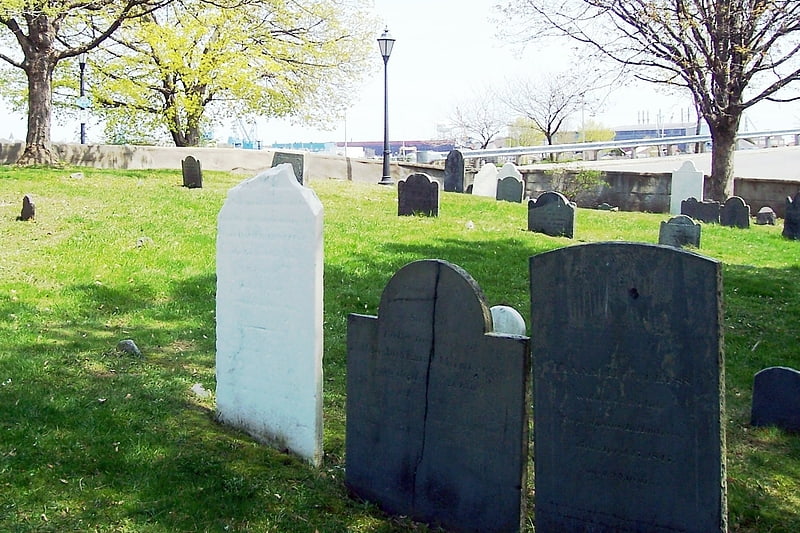
Cemetery in Portsmouth, New Hampshire. Point of Graves Burial Ground is a small historic cemetery in Portsmouth, New Hampshire, dating to the 17th century. It was the final resting place for many of Portsmouth's prominent residents including the Wentworth family, the Vaughan family, the Rogers, and the Lears. It is the oldest known surviving cemetery in Portsmouth, and one of the oldest in the state. It has about 125 gravestones. Previously neglected, it is now well maintained by the Mayor's Committee and the city. The cemetery plot was on a point of land that directly overlooked the Piscataqua River in earlier times.[1]
Strawbery Banke Museum
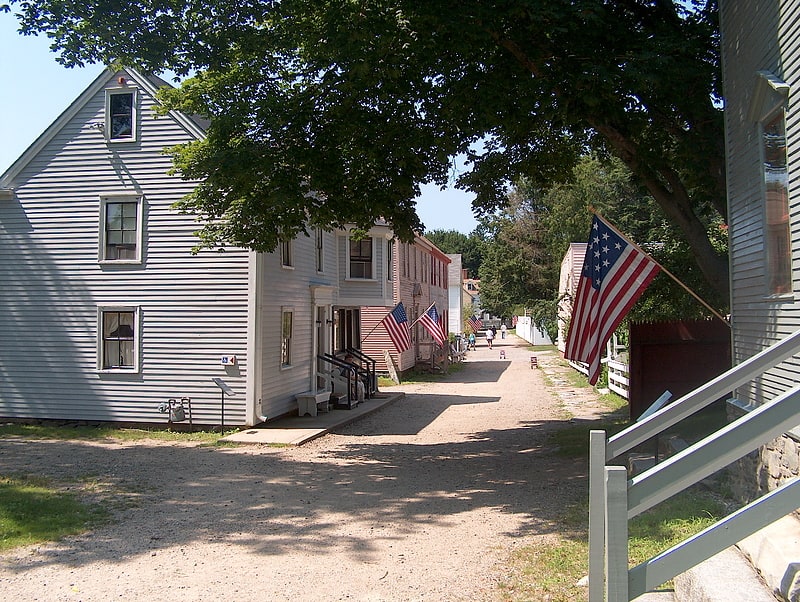
Museum in Portsmouth, New Hampshire. Strawbery Banke is an outdoor history museum located in the South End historic district of Portsmouth, New Hampshire. It is the oldest neighborhood in New Hampshire to be settled by Europeans, and the earliest neighborhood remaining in the present-day city of Portsmouth. It features more than 37 restored buildings built between the 17th and 19th centuries in the Colonial, Georgian, and Federal style architectures. The buildings once clustered around a waterway known as Puddle Dock, which was filled in around 1900. Today the former waterway appears as a large open space.[2]
Address: 14 Hancock St, 03801 Portsmouth
Rundlet-May House
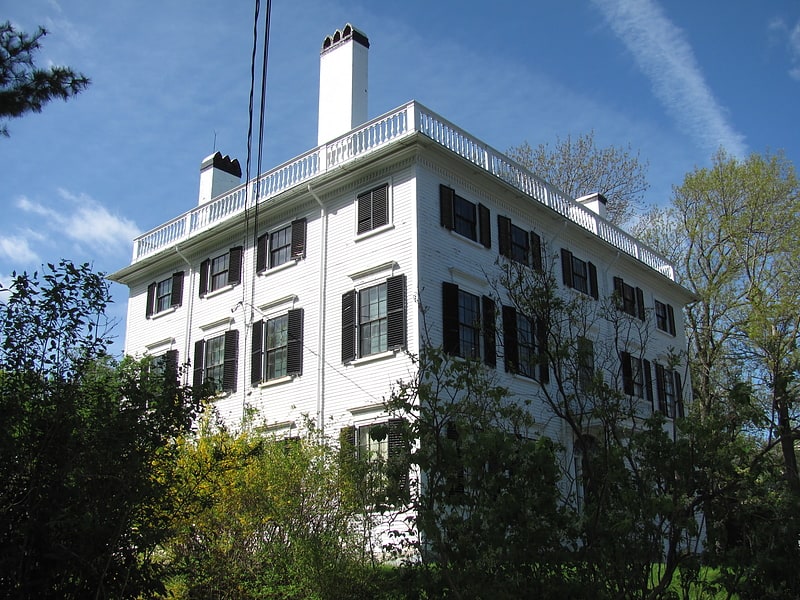
Museum in Portsmouth, New Hampshire. The Rundlet-May House is a historic house museum at 364 Middle Street in Portsmouth, New Hampshire, United States. Built in 1807, it is a well-preserved example of a high-end Federal style mansion, built for a wealthy merchant. The house is of particular significance due to the survival of early documentation related to its construction. It is now owned by Historic New England and open seasonally for tours. It was listed on the National Register of Historic Places in 1976.[3]
Address: 364 Middle Street, 03801-5016 Portsmouth
Portsmouth Athenæum
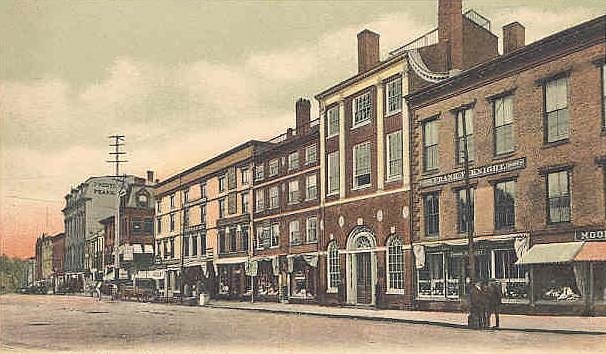
Museum in Portsmouth, New Hampshire. The Portsmouth Athenæum is an independent membership library, gallery, and museum in Portsmouth, New Hampshire, United States. It preserves and provides access to an extensive collection of manuscripts, rare books, photographs, artworks and artifacts, and digital collections related to local history and genealogy, in addition to a circulating library for its membership. As an intellectual center of the community, it sponsors exhibitions, concerts, lectures, and other educational and cultural programs. The building, dating to 1805, has been listed on the National Register of Historic Places since 1973.[4]
Address: 9 Market Square, 03801-4011 Portsmouth
Badger's Island
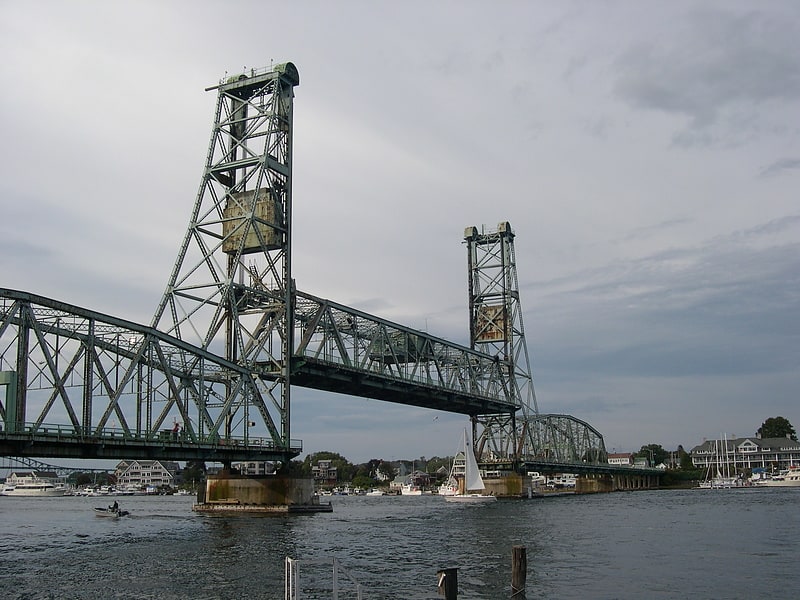
Island in Kittery, Maine. Badger's Island is located in the Piscataqua River at Kittery, Maine, directly opposite Portsmouth, New Hampshire. It carries U.S. Route 1 between the states, connecting to the Kittery mainland by the Badger's Island Bridge, and to New Hampshire by the Memorial Bridge. Now largely a suburb of Portsmouth, the island features houses, condominiums, restaurants and marinas.[5]
Wentworth-Gardner House

Museum in Portsmouth, New Hampshire. The Wentworth Lear Historic Houses are a pair of adjacent historic houses on the south waterfront in Portsmouth, New Hampshire. Both buildings and an 18th-century warehouse are owned by the Wentworth Lear Historic Houses and are operated as a house museum. They are located at the corner of Mechanic and Gardner Streets. The two houses, built c. 1750–60, represent a study in contrast between high-style and vernacular Georgian styling. The Wentworth-Gardner House is a National Historic Landmark, and the houses are listed as the Wentworth-Gardner and Tobias Lear Houses on the National Register of Historic Places.[6]
Address: 51 Hunking St, 03801-4613 Portsmouth
North Church
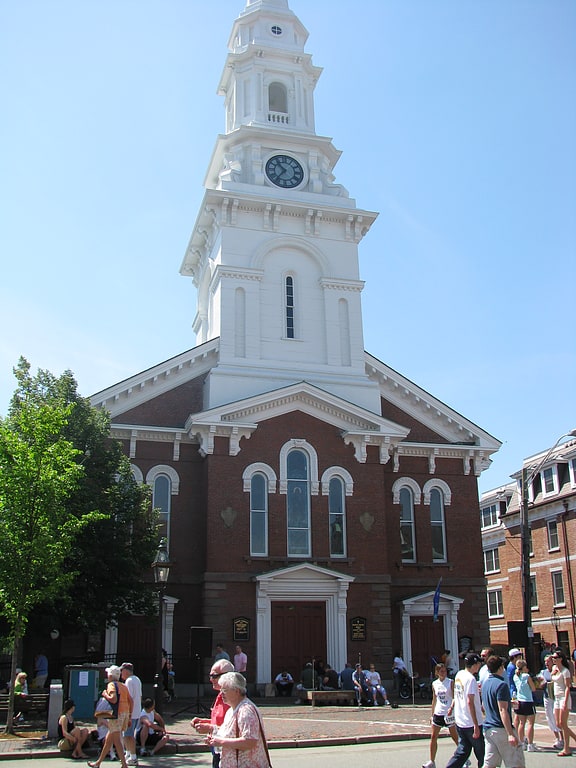
Church in Portsmouth, New Hampshire. The North Church of Portsmouth, New Hampshire, United States, is a historic Congregational church located in Market Square. Sited directly across from the Portsmouth Athenæum, it features an Italianate edifice and a steeple visible from most of the city, the Piscataqua River, and communities on its western bank in Maine. Its spire has been referred to as Portsmouth's "landmark of record". The church is home to Portsmouth's United Church of Christ congregation.[7]
Address: 2 Congress Street, 03801 Portsmouth
African Burying Ground
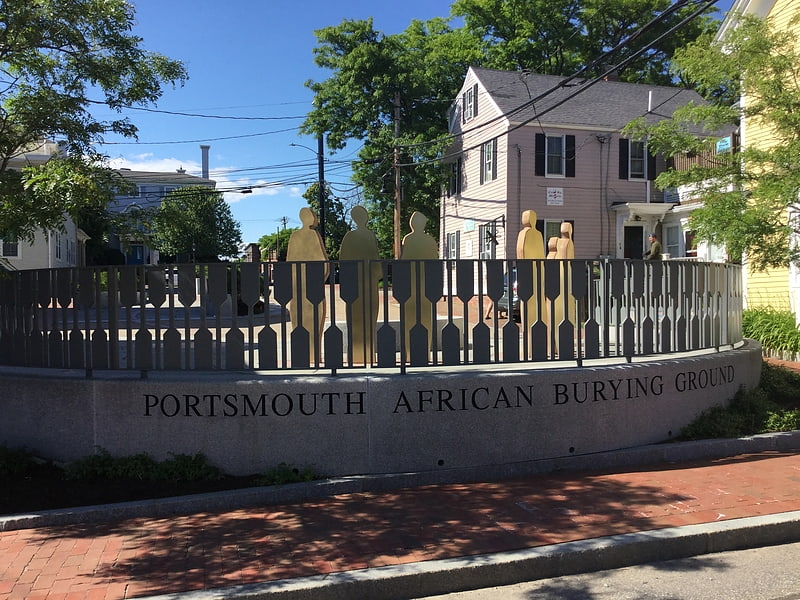
The Portsmouth African Burying Ground is a memorial park on Chestnut Street in Portsmouth, New Hampshire, United States. The memorial park sits on top of an 18th century gravesite containing almost two hundred freed and enslaved African people. It is the only archeologically verified African burying ground for the time period in New England.
The site was discovered in 2003 when construction workers discovered the buried while trying to dig a manhole. Remains of eight individuals were exhumed and determined to be of African descent. Of the eight remains, four were men, one was a female, one a child, and the rest were unable to be determined.[8]
Address: 125 Court St, Portsmouth
Piscataqua River Bridge

Through arch bridge in Kittery, Maine. The Piscataqua River Bridge is a through arch bridge that crosses the Piscataqua River, connecting Portsmouth, New Hampshire with Kittery, Maine. Carrying six lanes of Interstate 95, the bridge is the third modern span and first fixed crossing of the Piscataqua between Portsmouth and Kittery. The two other spans, the Memorial Bridge and the Sarah Mildred Long Bridge, are both lift bridges, built to accommodate ship traffic along the Piscataqua. The high arch design of the Piscataqua River Bridge eliminates the need for a movable roadway.[9]
Prescott Park
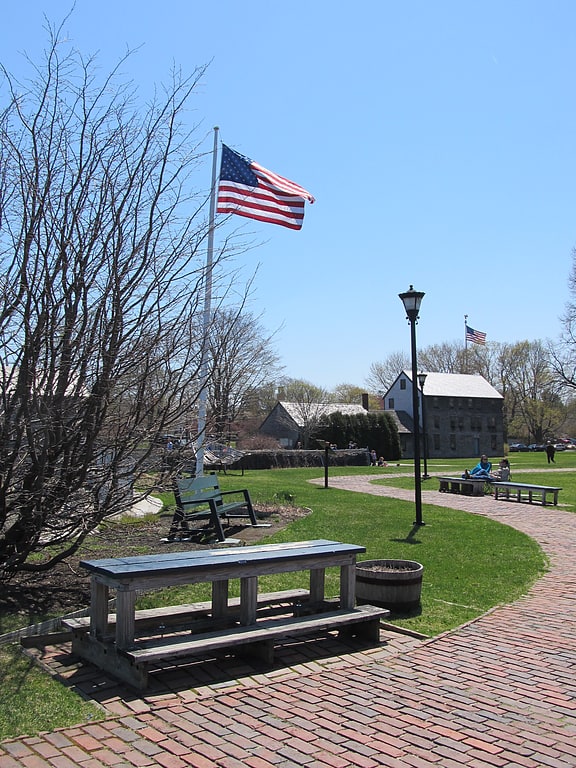
Park in Portsmouth, New Hampshire. Prescott Park is a ten-plus acre waterfront park in Portsmouth, New Hampshire, United States. The land was purchased in the 1930s by two sisters, Josie and Sarah Prescott. The sisters, public school teachers, had used an inheritance to systematically purchase and clear properties along the Piscataqua River. The sisters' goal was to create a public waterfront park, free and accessible to all, replacing what had become a run-down and seedy industrial area. In 1949 the Prescott sisters' trust was established with $500,000. The park was willed to the city of Portsmouth in 1954 for public enjoyment.
Prescott Park comprises over 10 acres (4.0 ha) of waterfront property along the Piscataqua River. Since 1974 it has hosted full outdoor productions of Broadway plays for family audiences during the summer months. There are also many flower gardens and water fountains maintained since the mid-1960s.
The park is directly across Marcy Street from the Strawbery Banke Museum.
The Players' Ring Theater is located in the park.[10]
Address: 105 Marcy St, 03801-4616 Portsmouth
The Music Hall

Theater in Portsmouth, New Hampshire. The Music Hall is an 895-seat theater located at 28 Chestnut Street in Portsmouth, New Hampshire, in the United States. Built in 1878, The Music Hall claims to be the oldest operating theater in New Hampshire and the 14th oldest in the United States. An independent venue that offers music, readings, comedy, and cinema, The Music Hall brings in 130,000 visitors a year. In the past it has hosted musicians like Tony Bennett and authors like Dan Brown.[11]
Address: 28 Chestnut St, 03801-6606 Portsmouth
Moffatt-Ladd House
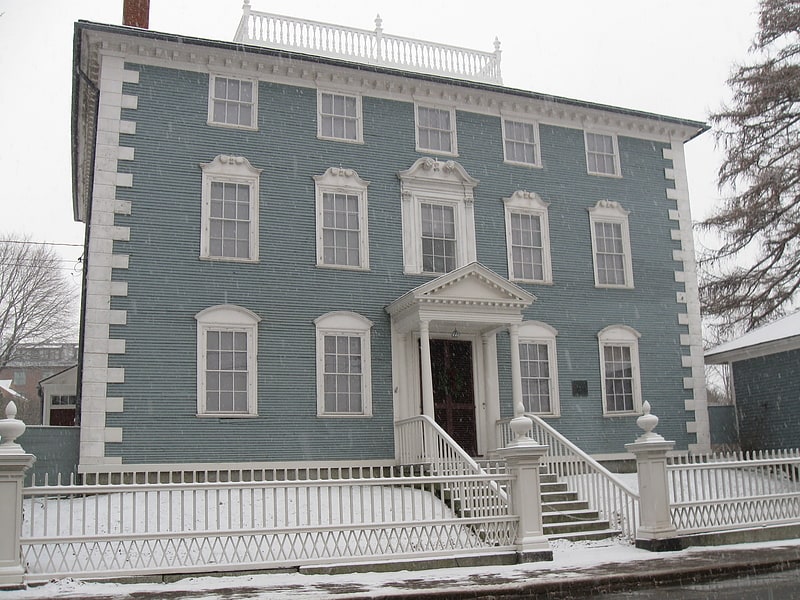
Museum in Portsmouth, New Hampshire. The Moffatt-Ladd House, also known as the William Whipple House, is a historic house museum and National Historic Landmark in Portsmouth, New Hampshire, United States. The 1763 Georgian house was the home of William Whipple, a signer of the Declaration of Independence and Revolutionary War general. The house is now owned by the National Society of Colonial Dames in New Hampshire, and is open to the public.
Among the contents are Whipple's sword and other personal items, along with a portrait of him. Outside is a horse chestnut tree that Whipple planted in 1776 with seeds that he brought back from Philadelphia. The house was declared a National Historic Landmark in 1968.[12]
Address: 154 Market St, 03801-7708 Portsmouth
John Paul Jones House
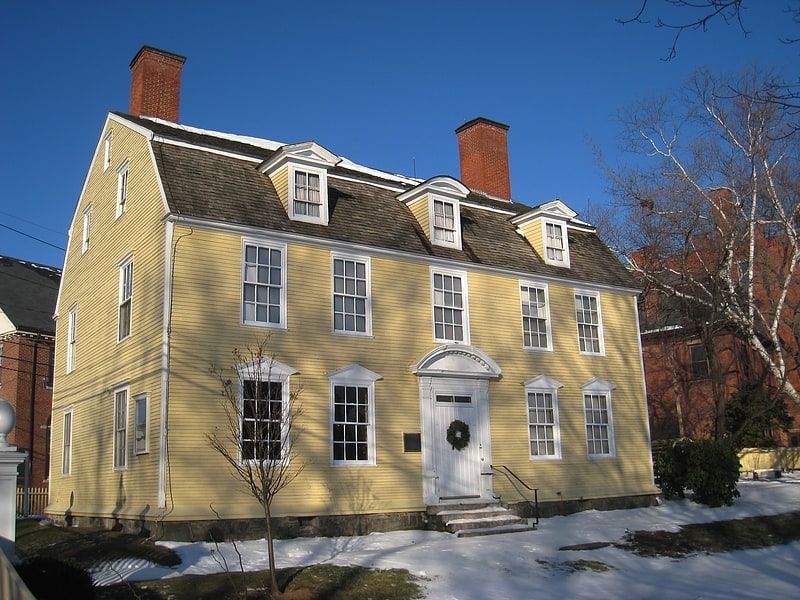
Museum in Portsmouth, New Hampshire. The John Paul Jones House is a historic house at 43 Middle Street in Portsmouth, New Hampshire. Now a historic house museum and a National Historic Landmark, it is most significant as the only known surviving structure in the United States associated with American Revolutionary War naval hero John Paul Jones, who was resident here in 1781-82 when it was operated as a boarding house.[13]
Address: 43 Middle Street, 03801-4302 Portsmouth
MacPheadris–Warner House

Museum. The Warner House, formerly known as the MacPheadris–Warner House, is a historic house museum at 150 Daniel Street in Portsmouth, New Hampshire, United States. Built 1716–1718, it is the oldest, urban brick house in northern New England, and is one of the finest early-Georgian brick houses in New England. It was declared a National Historic Landmark in 1960, and is listed on the National Register of Historic Places.
The Warner House is a 2+1⁄2-story brick structure, with walls 15 inches (38 cm) thick laid in Flemish bond. A belt course separates the two main floors, and the slightly overhanging cornice is studded with modillions. It now has a gambrel roof; this is a later modification to what was originally a pair of side gable pitches with a deep valley between them. At the break line in the gambrel there is a low balustrade. The cupola was listed in the original 1716 bill by John Drew, master-builder. The interior of the house follows a typical Georgian four-room plan, with an added kitchen wing in the rear. The walls of the central hall and stairway are decorated with four murals that are the oldest, extant Anglo-American wall murals in the country.
The house was built for Capt. Archibald Macpheadris, a Scots-Irish sea captain who settled in Portsmouth. He married Sarah Wentworth, daughter of John Wentworth (Lieutenant-Governor). Macpheadris died in 1729, and the house passed to his wife and children.[14]
Address: 150 Daniel St, 03802 Portsmouth
Governor John Langdon House
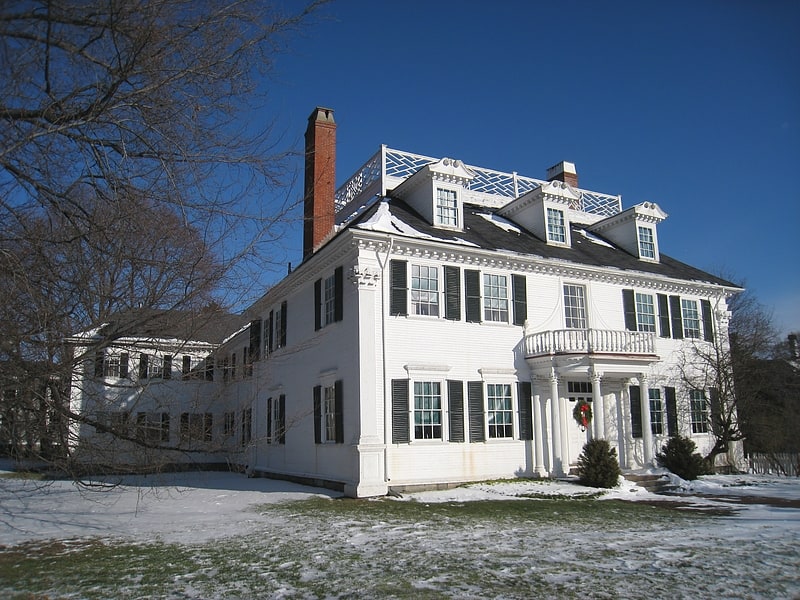
Museum in Portsmouth, New Hampshire. The Governor John Langdon House, also known as Governor John Langdon Mansion, is a historic mansion house at 143 Pleasant Street in Portsmouth, New Hampshire, United States. It was built in 1784 by John Langdon, a merchant, shipbuilder, American Revolutionary War general, signer of the United States Constitution, and three-term President of New Hampshire. The house he built for his family showed his status as Portsmouth's leading citizen and received praise from George Washington, who visited there in 1789. Its reception rooms are ornamented by elaborate wood carving in the rococo style. The house was declared a National Historic Landmark in 1974, and is now a house museum operated by Historic New England.
The house Langdon had built resembles typical late Georgian houses, with five bays across, a center entry, and four rooms on each floor, flanking a grand central hall and stairway. It is built on a larger and grander scale than most houses, and has very high quality interior woodwork. The interior joinery is attributed to Ebenezer Clifford, a leading woodworker of the Portsmouth area. The main entry is also particularly elaborate with a large door flanked by pairs of engaged columns, and sheltered by a semi-circular portico supported by Corinthian columns and topped by a balustrade.
After Langdon's death in 1819, his lone surviving daughter continued to use the house, but did not live there. Between 1833 and 1902 the house passed through several hands. In the 1850s a fire severely damaged the southwest corner of the house, which was reconstructed. In 1877 the house came into the hands of Frances E. Bassett, a descendant of John Langdon's brother Woodbury. Her son and daughter-in-law, Woodbury and Elizabeth Langdon, converted the house into a Colonial Revival showplace, adding a two-story wing designed by McKim, Mead & White whose details harmonize well with the original structure, and include a dining room based on one built by the ancestral Woodbury Langdon and preserved in the Rockingham Hotel. Elizabeth Langdon deeded the property to Historic New England in 1947.
The house was declared a National Historic Landmark in 1974. It is open to the public for tours on weekends from June to October, and the grounds are available for functions.[15]
Address: 143 Pleasant St, 03801 Portsmouth
St. John's Church
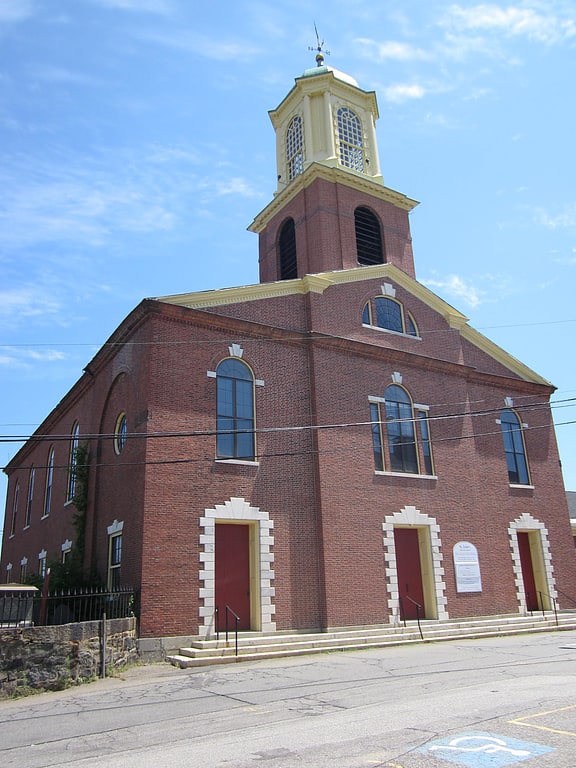
Building in Portsmouth, New Hampshire. St. John's Church is a historic church at 101 Chapel Street in Portsmouth, New Hampshire, United States. The brick building was designed by Alexander Parris and built in 1807; it was the first brick church in the state of New Hampshire, and is a rare surviving early design by Parris. The building was listed on the National Register of Historic Places in 1978. The church is home to an Episcopal congregation organized in 1732, with roots in the city's 17th-century founding.[16]
Jackson House
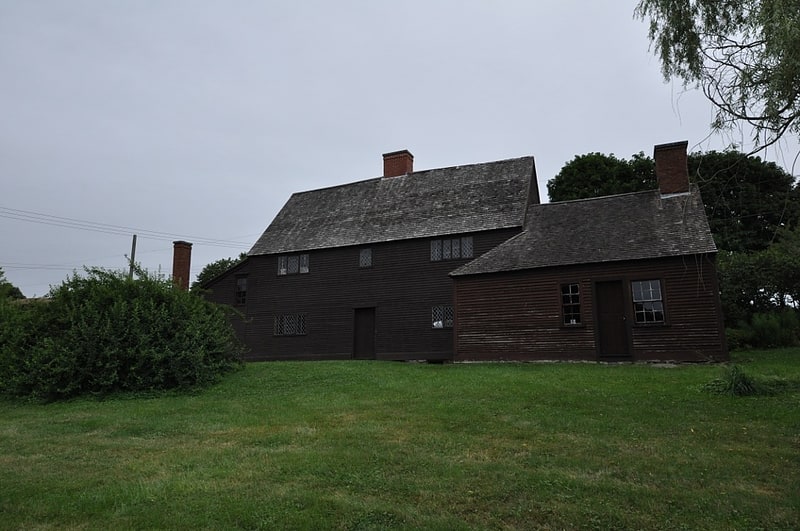
Museum in Portsmouth, New Hampshire. The Richard Jackson House is a historic house in Portsmouth, New Hampshire. Built in 1664 by Richard Jackson, it is the oldest wood-frame house in New Hampshire. It was designated a National Historic Landmark in 1968. It is now a historic house museum owned by Historic New England, and is open two Saturdays a month between June and October.[17]
Address: 76 Northwest St, 03801 Portsmouth
Haven Park
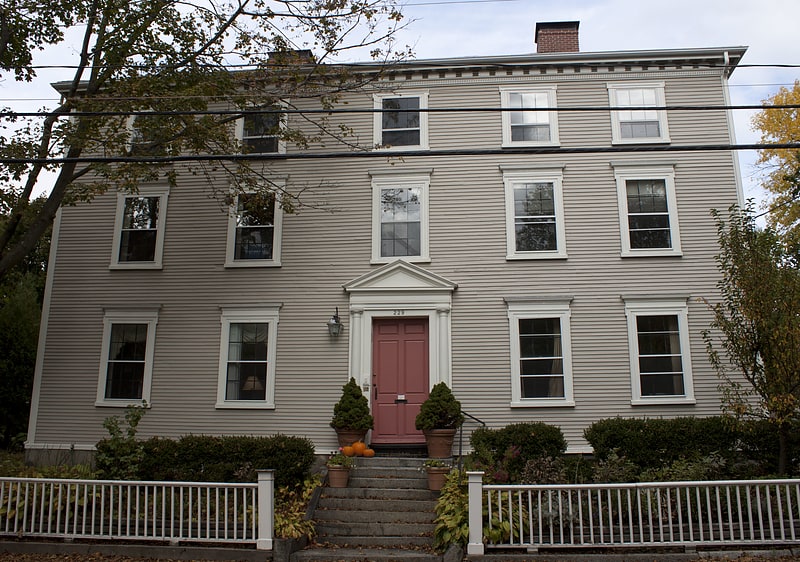
The Haven-White House is a historic house at 229 Pleasant Street in Portsmouth, New Hampshire. Built about 1800 for a prosperous merchant, it is an important early example of the city's Federal architecture, with numerous high-quality interior features, and a rare surviving period stable. The property was listed on the National Register of Historic Places in 1985.[18]
Address: 229 Pleasant St, Portsmouth
South Church
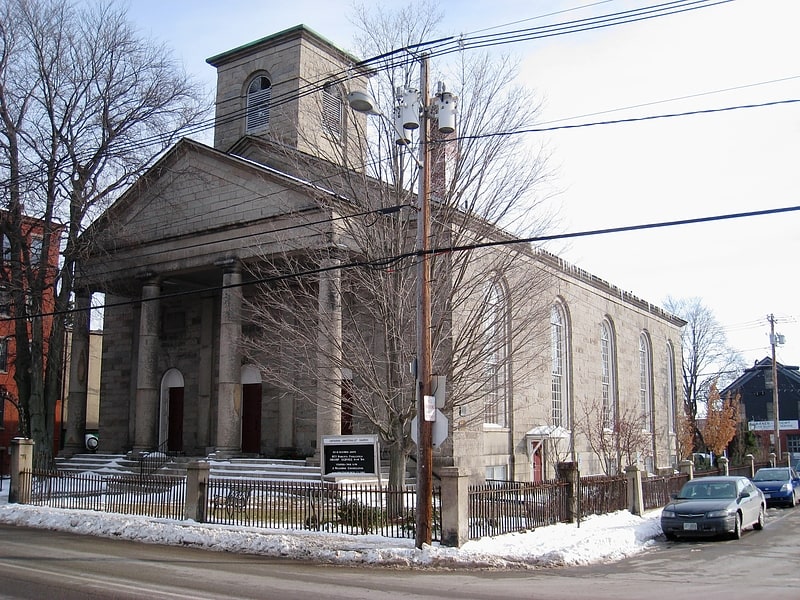
Building in Portsmouth, New Hampshire. South Parish is the historic name of a church at 292 State Street in Portsmouth, New Hampshire, in the United States. The church building, built in 1824-26, is one of the earliest examples of Classical Revival architecture in New England, and was listed on the National Register of Historic Places in 1979.
Now known as South Church or South Unitarian Universalist Church, the congregation is a covenanting member of the Unitarian Universalist Association, and is an accredited Green Sanctuary. Unitarian Universalism is a liberal religion with Jewish-Christian roots. It has no creed. It affirms the worth of human beings, advocates freedom of belief and the search for advancing truth, and tries to provide a warm, open, supportive community for people who believe that ethical living is the supreme witness of religion. The church is a Welcoming Congregation for bisexual, gay, lesbian, and transgender people.[19]
Address: 292 State St, 03801 Portsmouth
Wentworth–Coolidge Mansion
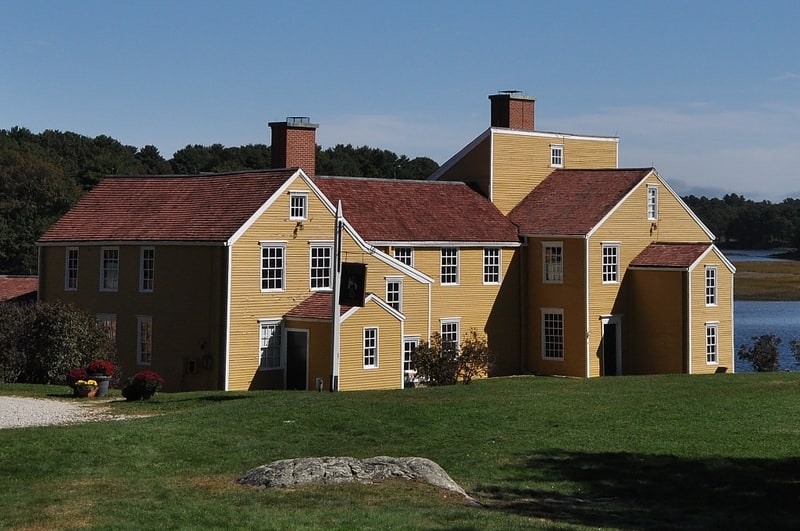
State park in Portsmouth, New Hampshire. Wentworth–Coolidge Mansion is a 40-room clapboard house which was built as the home, offices and working farm of colonial Governor Benning Wentworth of New Hampshire. It is located on the water at 375 Little Harbor Road, about two miles southeast of the center of Portsmouth. It is one of the few royal governors' residences to survive almost unchanged. The site is a New Hampshire state park, declared a National Historic Landmark in 1968. Today, the New Hampshire Bureau of Historic Sites manages the site with the assistance of the Wentworth-Coolidge Commission, a group of volunteer civic and business leaders appointed by the Governor.[20]
Address: 375 Little Harbor Rd, 03801 Portsmouth